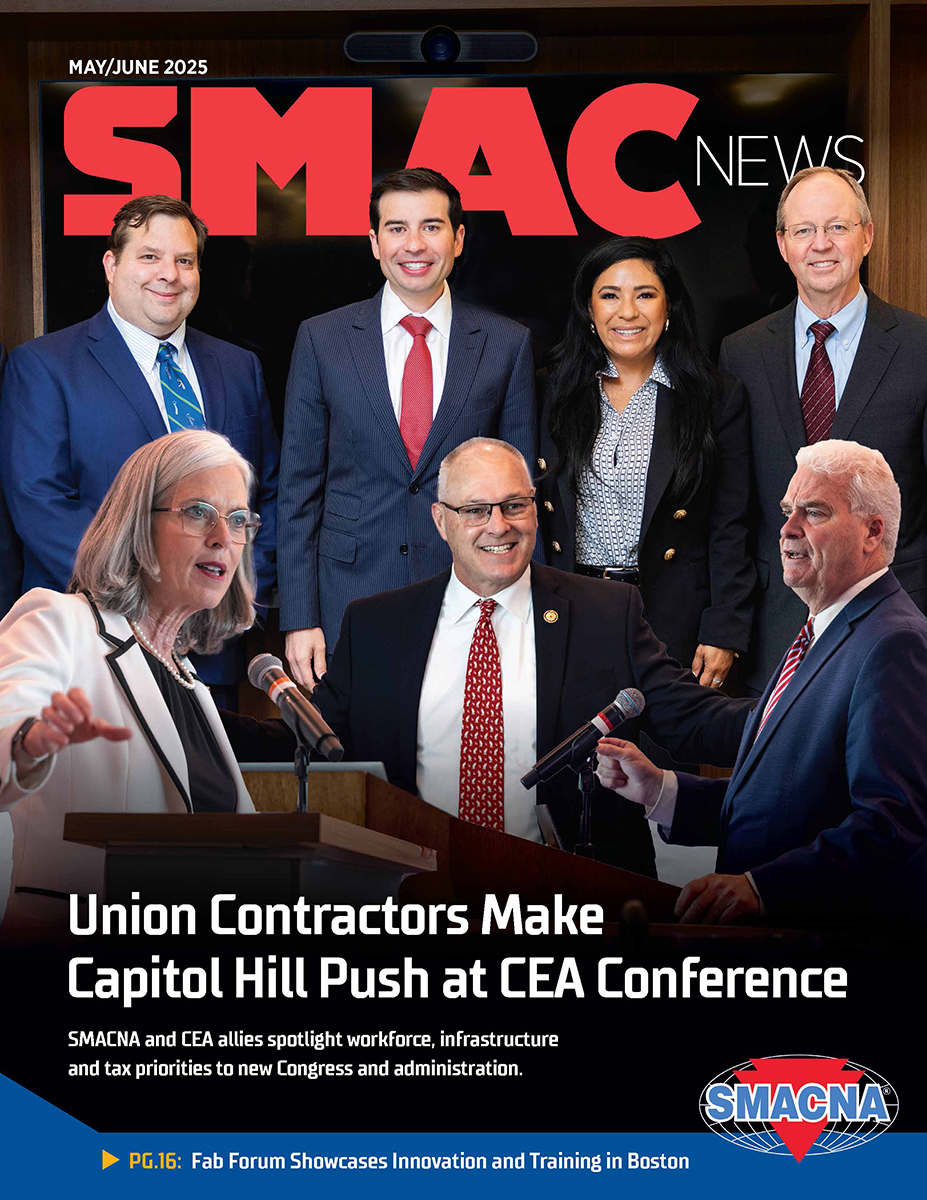NLRB In Limbo Following the Unprecedented Removal of Member Gwynne Wilcox
In early 2025, President Trump removed Gwynne Wilcox, a Democratic appointee to the National Labor Relations Board (NLRB), despite the fact that her five-year term did not expire until 2028.
 He cited her record of decisions that allegedly favored labor unions over employers. The move, unprecedented in the agency's history, sparked a series of legal challenges and raised fundamental questions about presidential authority and the independence of federal agencies like the NLRB. It means that the NLRB currently has only two members, instead of the three-member “quorum” required by the Supreme Court’s 2010 decision in New Process Steel v. NLRB, 560 U.S. 674 (2010). Nevertheless, the NLRB continues to function in many areas even in the absence of a three-member “quorum.”
He cited her record of decisions that allegedly favored labor unions over employers. The move, unprecedented in the agency's history, sparked a series of legal challenges and raised fundamental questions about presidential authority and the independence of federal agencies like the NLRB. It means that the NLRB currently has only two members, instead of the three-member “quorum” required by the Supreme Court’s 2010 decision in New Process Steel v. NLRB, 560 U.S. 674 (2010). Nevertheless, the NLRB continues to function in many areas even in the absence of a three-member “quorum.”
Wilcox Challenges Her Dismissal
Wilcox filed a lawsuit challenging her removal. She argued that her dismissal violated Section 3(a) of the National Labor Relations Act (NLRA), which permits removal of NLRB members only for "neglect of duty or malfeasance in office" and requires a notice and hearing.
In March 2025, U.S. District Judge Beryl Howell issued a decision finding that President Trump's action was "blatantly illegal," emphasizing that the president's authority does not extend to removing independent agency officials without cause. Judge Howell ordered Wilcox reinstated to her position at the NLRB.
The Supreme Court's Intervention
The legal battle escalated when the Trump administration appealed the decision, bringing the case before the U.S. Supreme Court. On April 9, 2025, the Supreme Court issued an emergency ruling allowing Wilcox’s dismissal to stand. The Court’s majority noted that:
“Because the Constitution vests the executive power in the President, see Art. II, §1, cl. 1, he may remove without cause executive officers who exercise that power on his behalf, subject to narrow exceptions recognized by our precedents.”
The Court did not rule on the merits of Wilcox’s lawsuit. The Court also rejected Wilcox’s argument that the President’s authority to remove NLRB members without “cause” could be applied to members of the Federal Reserve, including Chair Jerome Powell.
Wilcox’s lawsuit now returns to a federal appeals court before it can return to the Supreme Court. Thus, it will likely be more than one year before the Supreme Court finally resolves the issue of whether the President’s removal of Wilcox was lawful.
Implications for the NLRB
Wilcox’s removal reduces the NLRB to just two members, which is one short of the three-member quorum. During the loss of quorum, there are several operations of the NLRB that remain unchanged, including:
- Unfair Labor Practice Charges (or ULPs) — The NLRB continues investigating and prosecuting ULP charges. If the NLRB finds merit to the ULP charges, then the NLRB files a complaint and holds a hearing before an administrative law judge (ALJ).
- Representation Elections — The NLRB continues processing election petitions and holding NLRB elections.
- Other NLRB operations are delegated to the Chief ALJ during the NLRB’s loss of quorum. These include: requests for special permission to appeal, motions for default judgment, motions for summary judgment and motions for dismissal. While the Chief ALJ can issue rulings on these matters, those rulings remain appealable to the NLRB. In the absence of quorum, the NLRB cannot rule on those appeals.
Finally, some NLRB operations cease during any period in which the NLRB lacks quorum. These include:
- Appeals to the NLRB — In ULP cases, parties have the right to file exceptions or appeal the ALJ’s decision. When the NLRB lacks a quorum, the NLRB cannot issue decisions on these appeals, causing ULP cases to stall indefinitely.
Requests for Review to the NLRB — In representation cases, parties can “appeal” certain decisions directly to the NLRB. The NLRB cannot process these appeals if the NLRB lacks quorum.
Grant Collins is a specialist in labor and employment law at Felhaber Larson. Reach him at gcollins@felhaber.com.
Published: July 9, 2025
IN THIS ISSUE
A “Good Catch” for Safety
icon Mechanical’s proactive safety approach earns SMACNA’s 2024 Safety Innovation Award.
ARCHITECTURAL: Detroit Firm Rebuilds Historic Tower’s Copper Crown
CASS Sheet Metal battles wind, weather and tricky scaffolding to restore the iconic Detroit Towers.
CAPITOL HILL UPDATE: HVAC Tax Credits on the Chopping Block in House GOP Tax Plan
In May, House Republicans unveiled their much-anticipated tax package, and the news was not great for HVAC tax credits. The 389-page bill included the repeal of two major HVAC tax credits that address residential energy efficiency improvements.
Fab Forum Showcases Innovation and Training in Boston
Sheet metal leaders gather for hands-on learning and facility tours.
Financial Resilience: Strengthen Your Scenario Planning in 2025
Halfway through 2025, and from where we all stand, contractors’ continued challenges may seem unpredictable. Material costs have fluctuated due to regulatory changes and supply chain disruptions.
HVAC: Modern Niagara Bets Big on Ottawa’s Hard Rock Casino Revamp
In a landmark project, Modern Niagara is spearheading the transformation of an aging casino in Ottawa into a cutting-edge Hard Rock Hotel & Casino.
INDUSTRIAL: How to Navigate Explosive Growth
Allied Mechanical balances industrial megaprojects with customer loyalty and long-term strategy.
Innovating, Educating and Connecting For a Stronger Future
During my travels, I emphasize to all our members: SMACNA is your association. SMACNA exists solely to promote the interests of our members and the union sheet metal/HVAC industry.
NLRB In Limbo Following the Unprecedented Removal of Member Gwynne Wilcox
In early 2025, President Trump removed Gwynne Wilcox, a Democratic appointee to the National Labor Relations Board (NLRB), despite the fact that her five-year term did not expire until 2028.
RESIDENTIAL: Flourishing in the Residential Market
Metro Air increases its residential customer base by focusing on customer service, continued employee education and cost control.
Safety First, Profits Follow
How prioritizing safety builds a more profitable and sustainable business.
Strengthening SMACNA: Engaged Members, Stronger Connections
Entering my fourth year as CEO, I have moments when I can reflect on what it means to be a part of SMACNA.
Union Contractors Make Capitol Hill Push at CEA Conference
SMACNA and CEA allies spotlight workforce, infrastructure and tax priorities to new Congress and administration
Welcome New SMACNA Members


